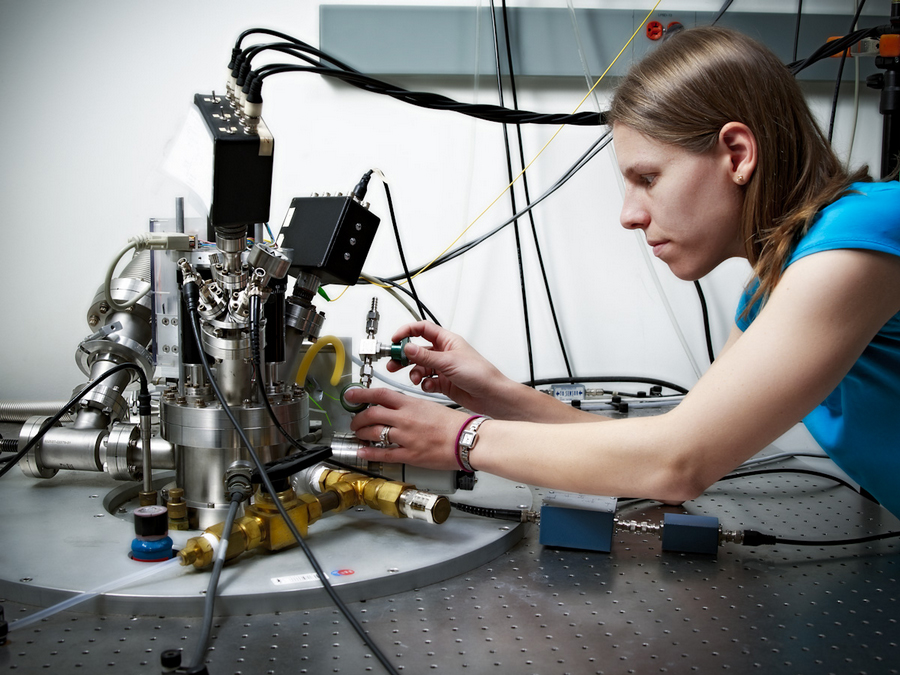Publications
- Fluxoid flucutations in mesoscopic superconducting rings
- Direct imaging of the coexistance of ferromagnetism and superconductivity at the LaAlO3/SrTiO3 interface
- Local measurement of the superfluid density in the pnictide superconductor Ba(Fe1-xCox)2As2 across the superconducting dome
- Spinlike susceptibility of metallic and insulating thin films at low temperature
- Persistent currents in normal metal rings
- A terraced scanning superconducting quantum interference device with submicron pickup loops
- Signal and charge transfer efficiency of few electrons clocked on microscopic superfluid helium channels
 Research Summary
Research SummaryMy graduate work involves discovering, investigating, and understanding new materials. One class of materials, complex oxides, have well understood and useful bulk properties such as high-k dielectrics, magnetism and superconductivity. However, new exciting behaviors emerge when interfaces are created by epitaxially growing a thin film of one material on a bulk substrate. One example of a new and surprising behavior is the conducting interface that appears between the insulators lanthanum aluminate and strontium titanate. To study these materials on a local scale I use a home-built scanning SQUID microscope in a dilution refrigerator. The dilution refrigerator allows me to make measurements at temperatures as low a ten millikelvin. The SQUID microscope is a flux sensor that can detect magnetic fields six orders of magnitude smaller than the earth's field (~10-11 T) and can resolve features as small as one one-hundredth the width of a human hair (~1 micron). (Photo by Steve Gladfelter) |